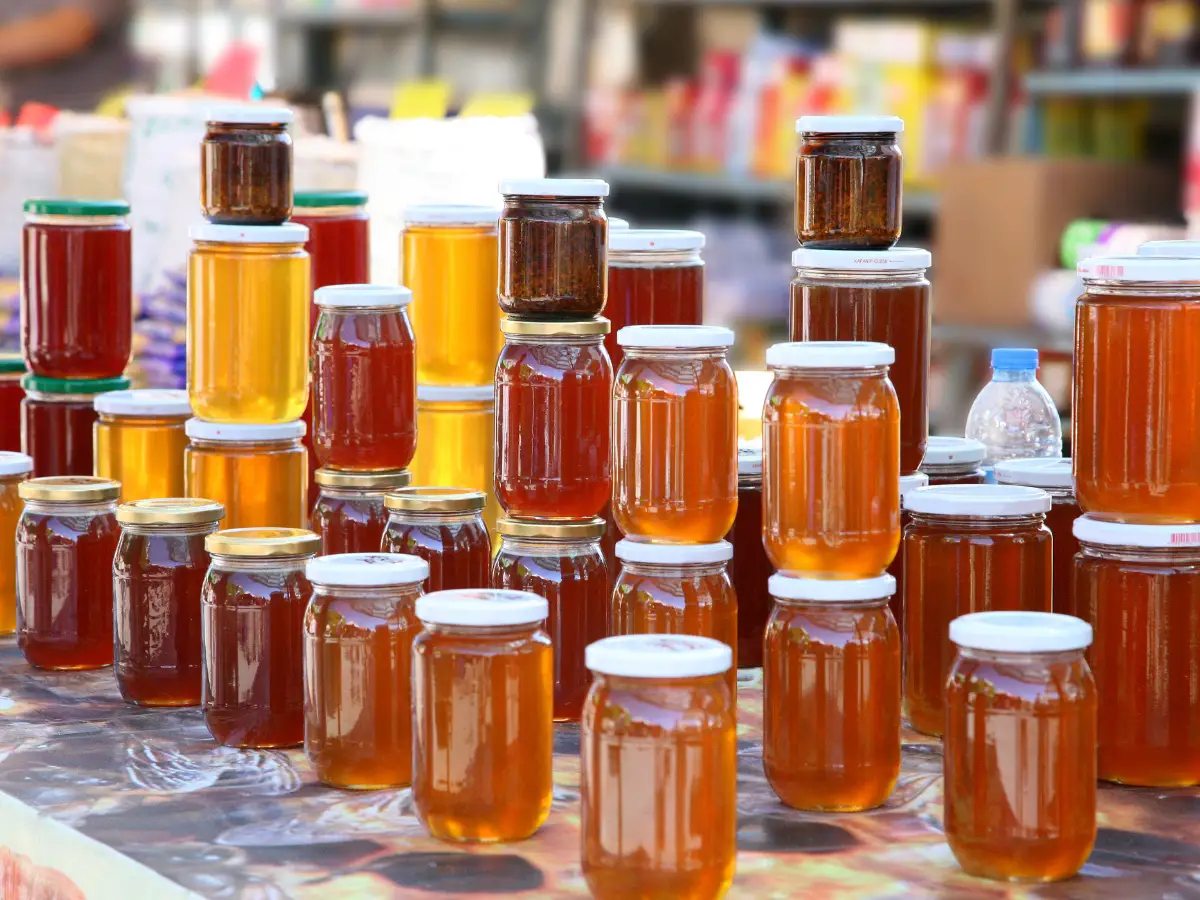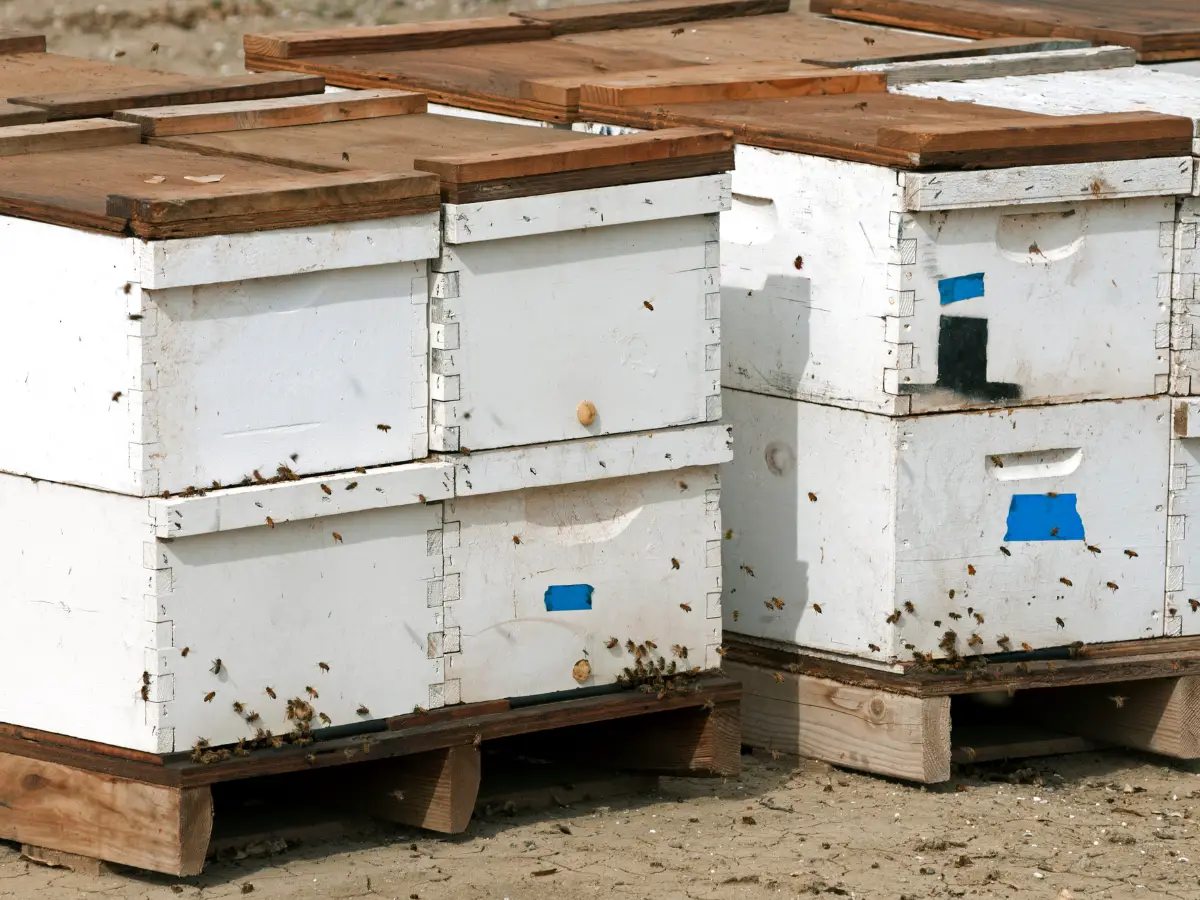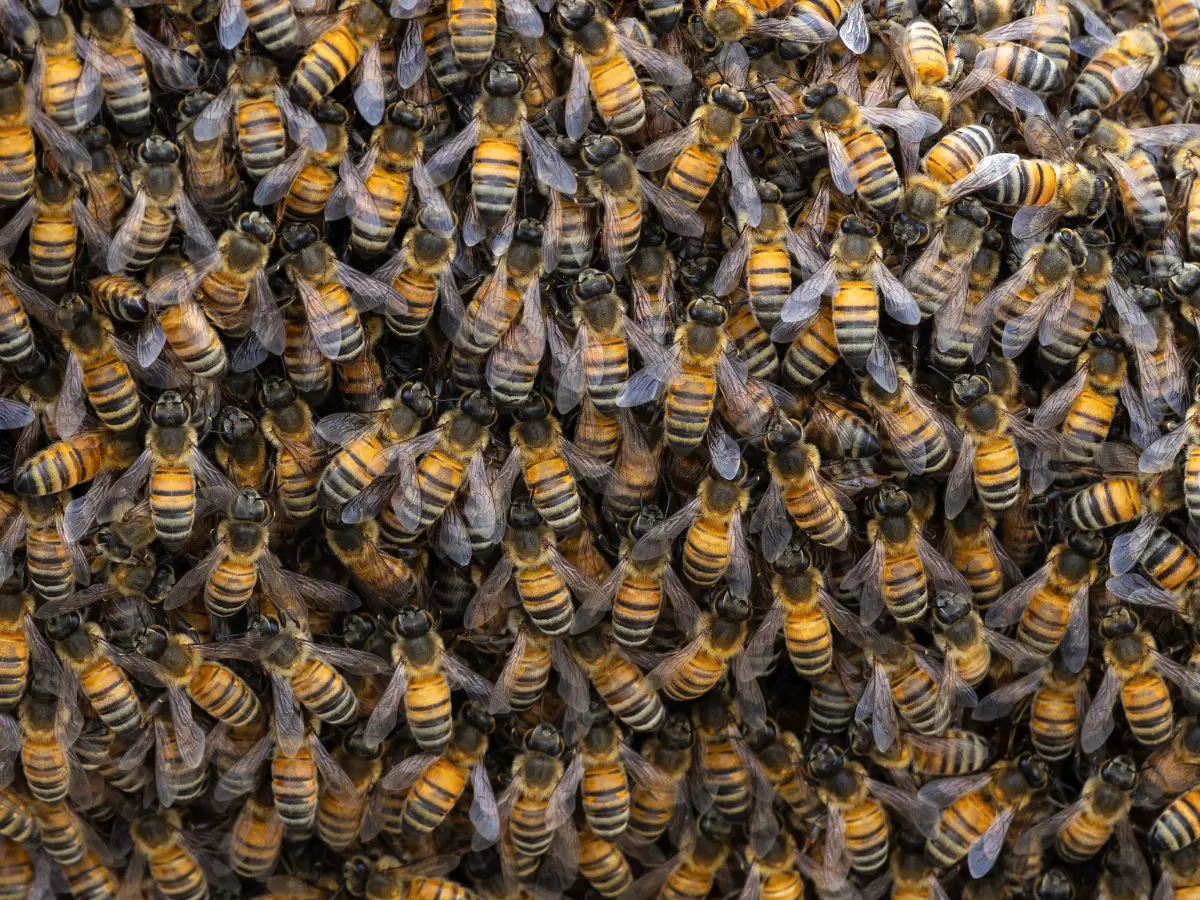California Honey is a famous brand of cannabis cartridges and disposables that has been making waves in the market for some time now. However, with the increasing demand for these products, there has been a rise in the number of fake California Honey cartridges and disposables in circulation. This has led to concerns among consumers who want to ensure that they are getting the real deal.
The fake California Honey cartridges and disposables are often sold at a lower price than the real ones. This makes them an attractive option for consumers who are looking to save some money. However, purchasing these fake products can be dangerous as they may contain harmful substances that can have adverse effects on the user’s health.
As such, it is essential for consumers to know how to differentiate between the real and fake products to ensure that they are getting a safe and quality product.

Understanding Honey
Honey is a sweet, viscous food substance produced by bees from the nectar of flowers. It has been used as a natural sweetener and medicinal remedy for centuries. Honey is a complex mixture of sugars, vitamins, minerals, and enzymes, and its composition can vary depending on the type of flowers the bees collect nectar from.
Honey is a popular alternative to processed sugar as a sweetener due to its natural properties. It is also believed to have several health benefits, including antibacterial and anti-inflammatory properties. However, it is important to note that while honey is a natural sweetener, it is still high in sugar and should be consumed in moderation.
There are many different types of honey available, each with its unique taste and color. Some of the most common types of honey include clover, acacia, and wildflower honey. The taste and color of honey can vary depending on the type of flowers the bees collect nectar from.
It is important to note that honey can be adulterated or fake, which means it has been mixed with other substances or diluted with water. This can be a problem when purchasing honey, as it can be difficult to tell the difference between real and fake honey. Some of the ways to identify real honey include conducting flame tests, water tests, paper tests, and others.
Overall, honey is a natural sweetener that has been used for centuries for its health benefits and sweet taste. However, it is important to consume honey in moderation and to be aware of the possibility of fake or adulterated honey.

California Honey: Real vs Fake
California Honey is a popular brand of disposable vape pens and cartridges. However, with the rise of counterfeit products, it’s important to know how to distinguish between the real and fake ones to ensure safety and quality.
One way to determine if California Honey is real or fake is by checking the packaging. The real ones have a scratch-off QR code on the back that can be scanned to verify their authenticity. If the code cannot be scanned or is missing, it’s likely a fake product.
Another way to tell if California Honey is real or fake is by examining the oil. Real California Honey should have a clear, golden color and a smooth consistency. If the oil is cloudy or has a strange texture, it’s likely a fake product.
It’s also important to note that real honey contains pollen, while fake honey does not. The presence of pollen is a good indicator of the honey’s authenticity. If the honey does not contain pollen, it’s likely a fake product.
When purchasing California Honey, it’s important to buy from a reputable source to ensure the product is genuine. Fake products can be dangerous and may contain harmful chemicals or additives.
In conclusion, it’s essential to be aware of the differences between real and fake California Honey products. By checking the packaging, examining the oil, and buying from a reputable source, consumers can ensure they are getting a safe and high-quality product.

The Black Market and Honey
The black market is a thriving industry that has infiltrated almost every sector, including the honey industry. Honey is one of the most counterfeited foods in the world, and the black market is flooded with fake honey that is often mixed with cheaper substitutes like corn syrup, molasses, or sugar water. These additives not only dilute the quality of the honey but also reduce its nutritional value.
In addition to fake honey, the black market also produces and distributes fake THC vape cartridges, which have become a major health concern. These cartridges are often made with cheap, low-quality ingredients and are filled with dangerous chemicals like pesticides, heavy metals, and vitamin E acetate. The use of these fake carts has been linked to severe lung injuries and deaths.
When it comes to California Honey, it is important to be aware of the risks associated with purchasing honey from the black market. Fake California Honey cartridges have been found in the black market, and they often contain harmful substances that can cause serious health problems.
Consumers should always purchase honey from reputable sources and should be cautious of any honey that is priced significantly lower than the market rate. It is also important to note that not all honey sold in California is produced in California. Some honey is imported from other countries and may not meet the same standards as locally produced honey.
In summary, the black market is a major source of fake honey and THC vape cartridges, and consumers should be cautious when purchasing these products. Always buy honey from reputable sources and avoid purchasing honey from the black market or unregulated markets.

Harm Reduction and Honey Consumption
Consumers can take steps to reduce the risk of consuming fake honey. The following tips can help:
- Buy honey from reputable sources: Consumers should buy honey from trusted sources, such as local beekeepers or reputable retailers. This can help ensure that the honey is pure and free from additives.
- Look for honey with pollen: According to Food Safety News, honey without pollen is likely to be fake. Consumers should look for honey that contains pollen to ensure that it is real.
- Check the label: Consumers should read the label carefully to ensure that the honey they are buying is pure and free from additives. Some labels may contain misleading information, so it’s important to read them carefully.
- Test the honey: Consumers can test honey at home using a simple water test. Real honey will sink to the bottom of a glass of water, while fake honey will dissolve or form lumps.
While these tips can help reduce the risk of consuming fake honey, it’s important to note that there is no foolproof way to detect fake honey. Consumers should always be cautious when buying honey and should report any suspicious products to the relevant authorities.
In addition to these tips, consumers should also be aware of the potential health risks associated with consuming fake honey. Fake honey may contain harmful additives or contaminants that can be harmful to health. To reduce the risk of harm, consumers should only consume honey from safe sources and should avoid consuming honey that appears to be fake or adulterated.
Overall, harm reduction is an important consideration when consuming honey. By taking steps to ensure that the honey is pure and free from additives, consumers can reduce the risk of harm and enjoy the many benefits of this delicious and nutritious food.

Honey Filtering and Its Implications
Honey filtering is a common practice in the honey industry. Filtering removes impurities like wax, bee parts, and debris from the honey. However, filtering can also remove pollen, an important component of natural honey.
The absence of pollen in honey is a red flag that the honey may be fake or adulterated. Pollen is a unique identifier of the floral source of honey. The floral source determines the taste, aroma, and color of honey. Without pollen, it is difficult to identify the origin of honey.
Filtered honey may also be ultra-filtered. Ultra-filtration is a process that removes all visible traces of pollen, wax, and other impurities. Ultra-filtered honey has a longer shelf life and a clearer appearance than unfiltered honey. However, ultra-filtration can also remove beneficial enzymes, antioxidants, and nutrients from honey.
The absence of pollen in honey can also be a health concern. Pollen is a natural source of protein, vitamins, and minerals. Some people use honey as a natural remedy for allergies. Honey with pollen can help build immunity to local allergens. Honey without pollen may not have the same therapeutic benefits.
To ensure that honey is natural and unadulterated, look for honey labeled “raw” or “unfiltered.” These types of honey may contain visible traces of pollen and other impurities. Honey labeled “pure” or “natural” may still be filtered or ultra-filtered.
In conclusion, honey filtering is a common practice in the honey industry. However, filtering can remove important components of natural honey like pollen, enzymes, and nutrients. Consumers should look for honey labeled “raw” or “unfiltered” to ensure that they are getting natural and unadulterated honey.
Regulations and Standards for Honey
Honey is a natural product that is widely consumed and has many health benefits. However, it is essential to ensure that the honey you are consuming is genuine and meets regulatory standards. In California, honey production is regulated under the California Food and Agricultural Code to ensure the vitality of the apiary industry and protect public health.
The US Department of Agriculture (USDA) has established standards for honey grades and labeling. The standards define the quality and grading of honey based on factors such as color, flavor, moisture content, and defects. The USDA grades honey into three categories: Grade A, Grade B, and Grade C. Grade A is the highest quality honey, while Grade C is the lowest.
The North American Free Trade Agreement (NAFTA) also has regulations for honey that is imported or exported between the US, Canada, and Mexico. The NAFTA regulations require that honey must meet the USDA standards and be free from antibiotics and other contaminants.
The World Health Organization (WHO) has established guidelines for food safety, including honey. The guidelines recommend that honey should be free from contaminants, including antibiotics, pesticides, and heavy metals. The WHO also recommends that honey should be stored in a clean, dry, and cool place to prevent spoilage.
The European Commission has established regulations for honey labeling and quality. The regulations require that honey should be free from additives and contaminants and should meet specific quality criteria. The labeling requirements include the country of origin, the type of honey, and the net weight.
The Food and Drug Administration (FDA) has established regulations for honey labeling in the US. The regulations require that honey should be labeled accurately and should not contain false or misleading information. The FDA also requires that honey should be free from added sugars and other substances.
In summary, honey production and labeling are regulated to ensure that consumers receive genuine and safe products. The regulations and standards established by various entities such as the USDA, WHO, European Commission, and FDA provide guidance to honey producers and consumers to ensure that honey meets specific quality criteria and is free from contaminants.
Honey Adulteration with Other Substances
Honey is one of the most commonly adulterated foods, with many manufacturers mixing it with other substances to increase their profits. Some of the most commonly adulterated substances found in honey include rice syrup and olive oil.
Rice syrup is a popular adulterant used to increase the volume of honey. It is a cheap and readily available substitute that is difficult to detect. However, it is important to note that not all rice syrup is used for adulteration purposes. Rice syrup can be a legitimate ingredient in some honey products.
Olive oil is another substance that is commonly used to adulterate honey. It is used to increase the weight and viscosity of the honey, making it appear thicker and more luxurious. Olive oil is also used to mask the taste and aroma of low-quality honey.
Unfortunately, detecting honey adulteration is not always easy. Many manufacturers go to great lengths to conceal their adulteration practices, making it difficult for consumers to know what they are buying. However, there are a number of tests that can be used to detect honey adulteration, including:
- Pollen analysis: This test is used to determine the floral origin of the honey. If the honey has been heavily processed or adulterated, it may not contain enough pollen to be identified.
- Nuclear magnetic resonance (NMR): This test is used to detect the presence of adulterants in honey. It is a highly accurate and reliable test that can detect even small amounts of adulterants.
- Carbon isotope ratio analysis: This test is used to detect the presence of C4 sugars in honey, which are commonly found in rice syrup and other adulterants.
It is important for consumers to be aware of the risks associated with consuming adulterated honey. Adulterated honey may contain harmful substances that can cause health problems. Additionally, consuming adulterated honey can also contribute to the decline of the beekeeping industry.
Identifying Legitimate Honey Sources
When it comes to buying honey, it is important to know how to identify legitimate honey sources. With so many options available in grocery stores, it can be difficult to determine which honey is real and which is fake. Here are some tips to help you identify legitimate honey sources:
Look for the Label
One of the easiest ways to identify legitimate honey sources is by looking for the label. Legitimate honey sources will have a label that includes the name and address of the producer, as well as the type of honey and the net weight of the product. If the label is missing any of this information, it may be a sign that the honey is not legitimate.
Check the Color and Texture
Real honey typically has a thick, viscous texture and a golden color. If the honey you are considering is thin and runny, it may be a sign that it has been diluted with water or other substances. Additionally, if the honey is a different color than what you would expect, it may be a sign that it is not legitimate.
Look for Pollen
Legitimate honey sources will contain pollen. If the honey you are considering does not contain pollen, it may be a sign that it is not legitimate. The presence of pollen is important because it can help you determine the origin of the honey.
Consider the Price
While price is not always an indicator of legitimacy, it is important to be wary of honey that is priced significantly lower than other options. If the price seems too good to be true, it may be a sign that the honey is not legitimate.
By following these tips, you can help ensure that you are buying legitimate honey from a reputable source.
Conclusion of the Article
In conclusion, distinguishing between real and fake California honey can be a difficult task. As discussed earlier in the article, there are several ways to identify real honey from fake honey, including the presence of pollen, consistency, and taste. However, these methods may not always be reliable as some fake honey can pass these tests.
One way to ensure that you are buying real California honey is to purchase from a reputable source. This can be a local beekeeper or a trusted brand that has a good reputation for producing real honey. Checking for proper labeling and packaging, including a scratch-off QR code, can also help verify the authenticity of the honey.
It is important to note that fake honey is not only a problem in California but is a widespread issue globally. The production and sale of fake honey not only cheat consumers but also harm the beekeeping industry and the environment. Therefore, it is crucial to support and promote the production and sale of real honey.
Overall, consumers should be aware of the potential for fake honey and take necessary precautions to ensure that they are purchasing real honey. By being knowledgeable about the characteristics of real honey and purchasing from reputable sources, consumers can support the beekeeping industry and enjoy the benefits of real, natural honey.
Frequently Asked Questions
How can I tell if my California Honey product is authentic?
To ensure authenticity, customers should always purchase California Honey products from authorized retailers or directly from the company’s website. Additionally, customers can check the packaging and labeling for any discrepancies or errors. If there are any doubts about the authenticity of a product, customers can contact California Honey’s customer service for assistance.
What lab results are available for California Honey products?
California Honey products undergo extensive lab testing to ensure quality and safety. Customers can access lab results for specific products on the company’s website or by contacting customer service.
What should I do if my California Honey disposable pen is not working?
If a California Honey disposable pen is not working, customers should first check the battery and ensure it is fully charged. If the issue persists, customers can contact California Honey’s customer service for assistance.
Are there any known fake California Honey products on the market?
Unfortunately, there have been reports of counterfeit California Honey products on the market. Customers should only purchase products from authorized retailers or directly from the company’s website to ensure authenticity.
What security measures does California Honey have in place for their vape products?
California Honey takes the safety and security of their products seriously. The company uses child-resistant packaging and tamper-evident seals to prevent unauthorized access. Additionally, California Honey products undergo extensive lab testing to ensure quality and safety.
Is California Honey a reputable company in the industry?
Yes, California Honey is a reputable company in the industry. The company is known for its high-quality products and commitment to customer satisfaction. California Honey has received positive reviews from customers and industry experts alike.





